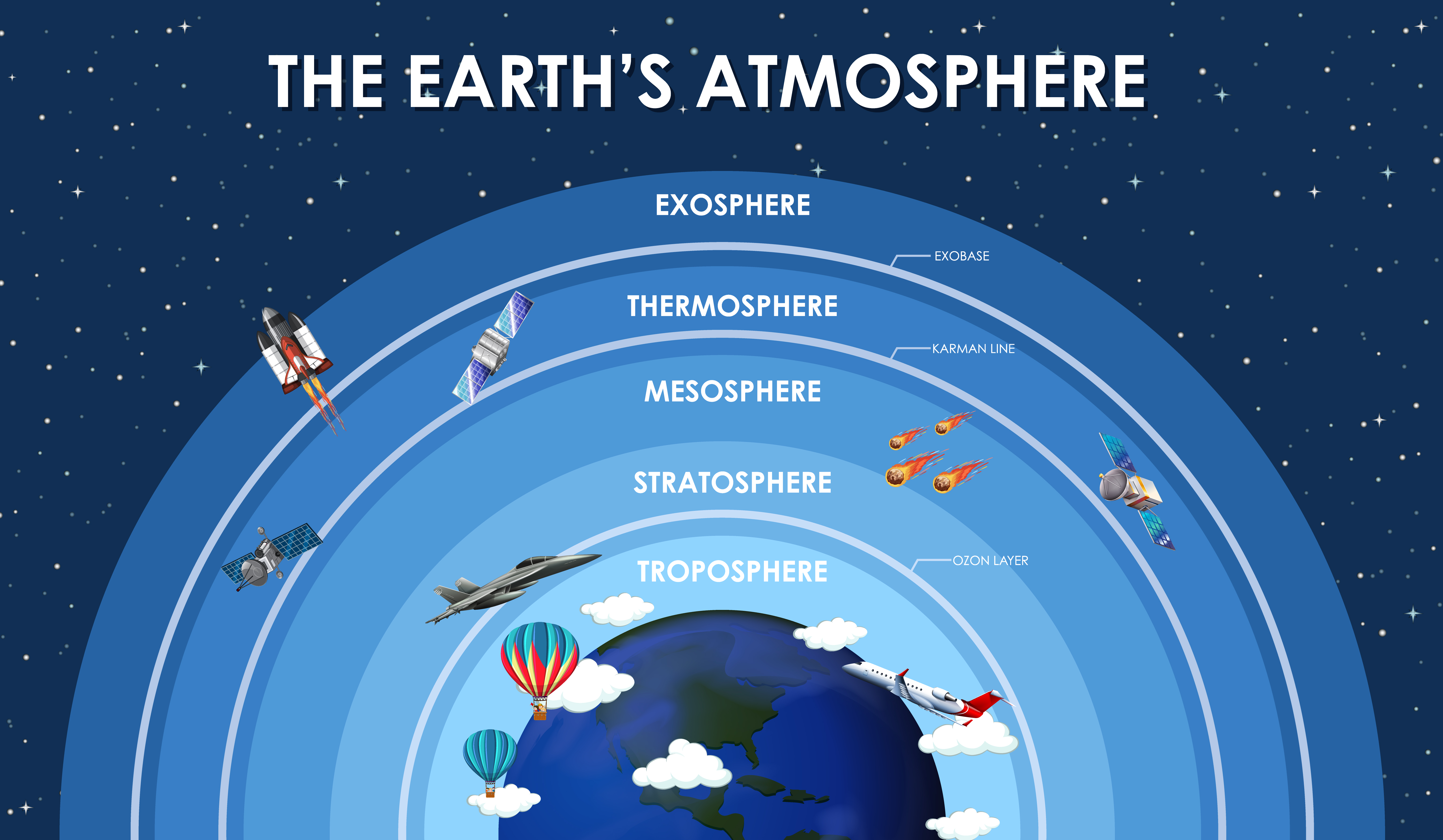Strictly speaking, the atmosphere has no upper limit; it gradually thins out until, at an altitude of several thousand kilometers, even lightweight helium atoms can escape Earth's gravitational pull. Within the atmosphere, distinct layers can be identified, with the most common division based on temperature, which undergoes characteristic changes with increasing altitude.
In the lowermost layer, extending from approximately 8 to 18 km in height, temperatures generally decrease as altitude increases. This relatively thin layer, known as the troposphere, is where weather phenomena occur. In the early days of aviation, some pioneers believed that space begins above roughly 5000 meters, as humans cannot sustain themselves in this altitude due to low oxygen levels. Given that conquerors of Himalayan peaks do not identify as astronauts, it is clear that this boundary was set too low.
Subsequently, the upper limit of the stratosphere was somewhat arbitrarily defined at approximately 50 km, later the boundary of the thermosphere at around 500 km, or even the upper limit of the exosphere at roughly 10,000 km, as the boundary to space. However, artificial satellites already orbit Earth at altitudes of about 200 km, with the ISS, for instance, positioned at 408 km altitude, and according to the latter definition, they are far from being in space.
In the 1950s, as pioneers of space exploration ascended higher into the sky, a practical perspective emerged to determine when someone had breached the gateway to space: at an altitude of about 80 km, the dynamic pressure on the control surfaces of an aircraft becomes so low that aerodynamic control becomes impossible. Every pilot from NACA, the predecessor organization of NASA, was officially titled an astronaut only after reaching this altitude.
Shortly thereafter, aerospace engineer Theodore von Kármán (1881–1963) calculated the altitude at which an aircraft would have to fly so fast to maintain its aerodynamic lift that centrifugal force would propel it out of Earth's orbit. This altitude is at 100 km and is referred to as the Kármán Line. As per the International Aeronautical Federation's (FAI) definition, this is now officially recognized as the boundary to space.


